

Coin Experiment – Coin in Water
Did you know that water can play tricks on your eyes?
This experiment is incredibly simple and requires only a glass, water and a coin of your choice.
It demonstrates a special property of water , called light refraction.
If you put a coin inside a glass of water, you will be able to see that it appears in two places at once.
It’s as if a mirror were used to show the coin to both the front and the back of its surface at the same time.
It’s almost like you have doubled the money!
Try it. It’s a cool trick.

Coin Experiment - Coin in Water
This experiment makes use of the optical property of water and air.
- a penny (or any coin)
- a clear glass
- adult supervision
Instructions
- Put a penny into an empty glass.
- Position your head so that you see the coin from the side of the glass (not from above).
- Slowly pour water into the glass until you see a second coin appear on the other side of the glass when you see from above.

Did you try this project?
Follow us on Pinterest and share a photo!
Light bends when it passes from one medium (water) into another medium of a different density (air).
This bending of light , called refraction , causes the apparent position of the coin to change to a shallower position 1 (see diagram).
The light bends when it passes from water to air on top of the water.
It does the same thing when it passes through the glass, making the coin appear to be closer to you.
As a result, you see two images of the coin.

- Jiang W, Chen RT, Lu X. Theory of light refraction at the surface of a photonic crystal. Phys Rev B . June 2005. doi: 10.1103/physrevb.71.245115
Similar Posts

Balloon Rocket Car Project STEM Activity
Propulsion And Newton’s Third Law Every day, we bear witness to the marvels of motion and energy. Airplanes cut through…
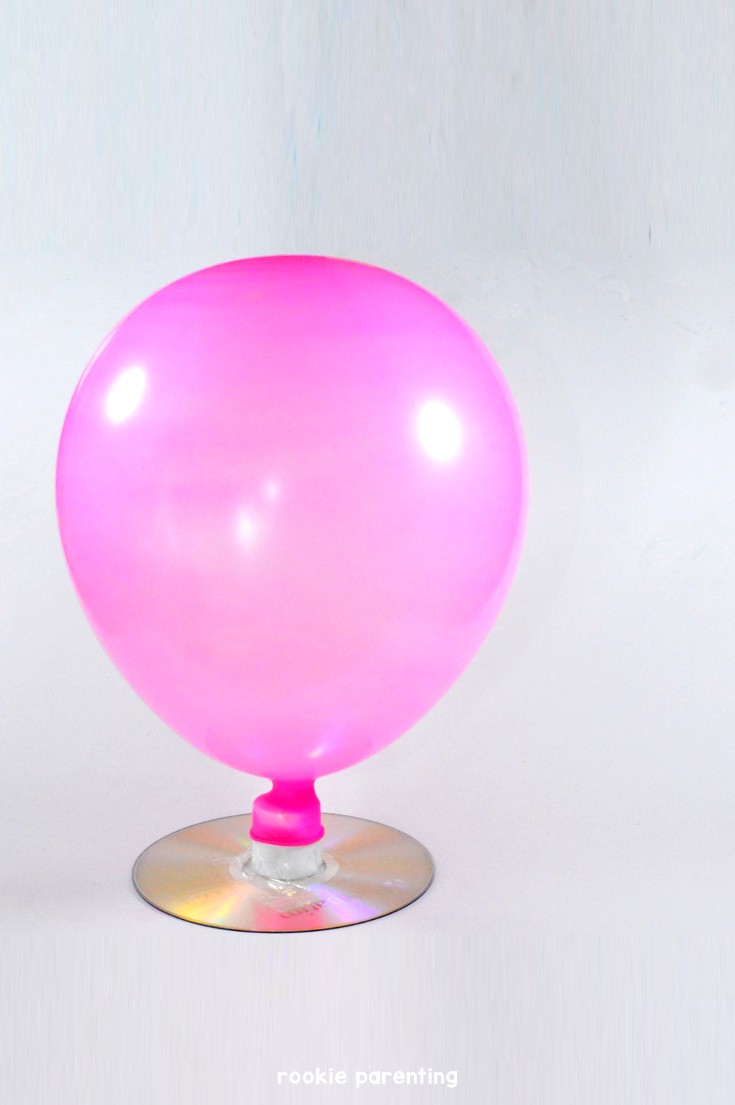
Balloon Hovercraft Science Experiment
Friction is the force created when two objects move across each other to oppose the movement. An object gliding on…

Why Is Water Attracted To A Charged Balloon
Here is a simple physics experiment using a property called static electricity. Every object is made up of small particles…

Iron In Cereal Experiment
Iron is an essential mineral to our body. It is found in every cell and is used to make hemoglobin, the…

Scientific Method Worksheet, Template & Example
Table of Contents What Is The Scientific Method? Scientific Method Steps Scientific Method Examples – Zoey and Sassafras Download Scientific…

How to Make a Sundial
Nowadays, we have clocks and watches that tell us when to wake up and leave for work. Before the invention…
Get Your ALL ACCESS Shop Pass here →
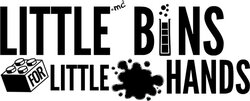
Drops Of Water On A Penny
Have you ever thought about how many drops of water can fit on a penny ? Try this fun science experiment with things found in your purse or pocket! Explore the surface tension of water with this fun and easy penny lab with the kids. We are always on the hunt for simple science experiments , and this one is just super fun and easy!
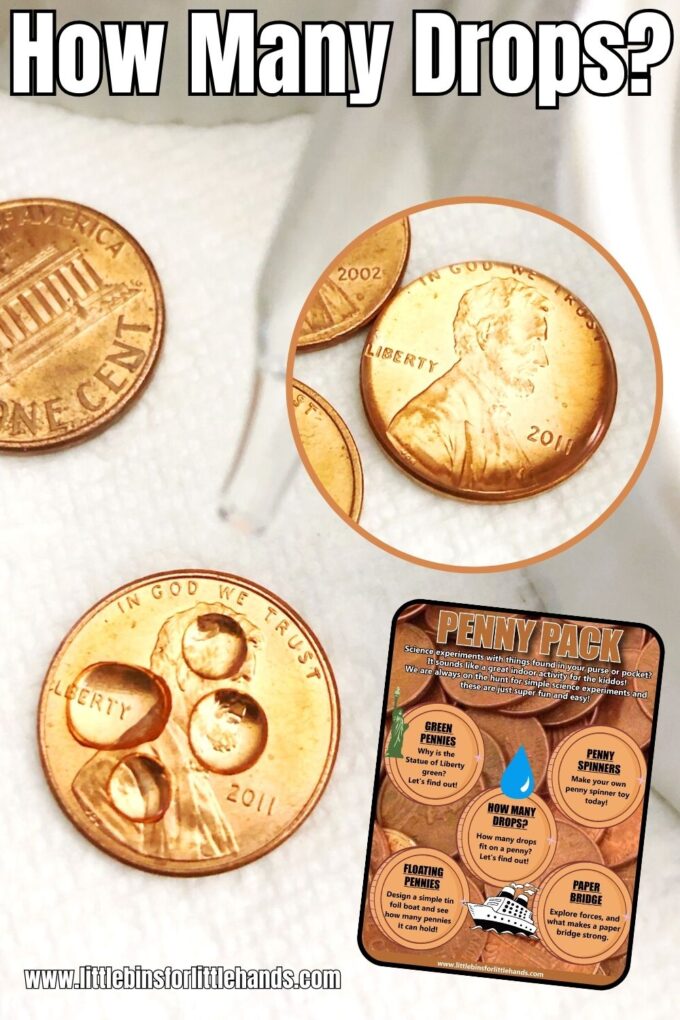
Explore How Many Water Drops On Penny
Add this simple penny lab to your science activities this season. If you want to learn about the surface tension of water, let’s dig in. While you’re at it, make sure to check out these other fun water science experiments.
Exploring water drops on a penny is a fantastic science experiment for kids because it’s simple and fascinating. By placing drops of water onto a penny, kids can observe how the water beads up and forms a dome-like shape, defying gravity.
This phenomenon occurs due to surface tension , the cohesive force that causes water molecules to stick together. Through this experiment, kids can learn about surface tension and how it affects the behavior of liquids. They can also experiment with variables such as the number of water drops or the penny’s cleanliness to see how it impacts the results. Additionally, this experiment can be efficiently conducted with everyday household items, making it accessible and engaging for scientists of all ages.

Water Drops On A Penny Project
You can also easily turn your penny experiment into a fantastic presentation along with your hypothesis. Check out the resources below to get started.
- Easy Science Fair Projects
- Science Project Tips From A Teacher
- Science Fair Board Ideas
Penny Lab Experiment In The Classroom
TIP: If you want to add a little variety to this experiment, swap out the pennies for nickels, dimes, and quarters. Ask your students to guess how many drops will fit on each coin. Record the date from the experiment and make a class graph chart with your results!
Additional ideas for penny lab hypotheses include using different liquids or clean vs. dirty pennies . What else can you think of when creating an experiment?
Get Your Free Printable Penny Lab Guide!
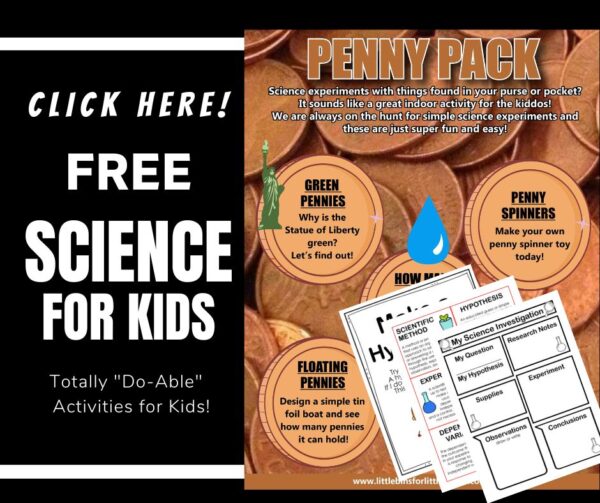
Penny Lab Experiment
Let’s investigate how many drops of water can fit on a penny. Grab your purse, turn over the couch cushions, or break out the piggy bank; it’s time to find some pennies to experiment with!
- Eyedropper or pipette
- Food coloring (makes seeing this in action MUCH easier, but is optional)
- Small bowls
Penny Experiment Set Up:
STEP 1: Add water to both of your bowls, and one of them, add green food coloring. This is optional if you want to see the drops a bit better.
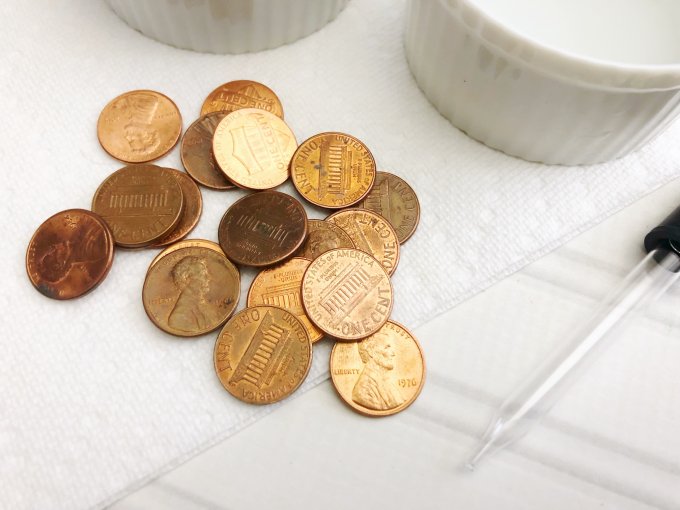
STEP 2: Use an eyedropper or pipette to pick up and carefully drip one drop of water at a time onto the penny.

STEP 3: Count how many drops you can fit onto one penny until the water overflows.
We were able to get ours up to about 27! Go ahead and record the data for separate trials on the same coin. What can you conclude?
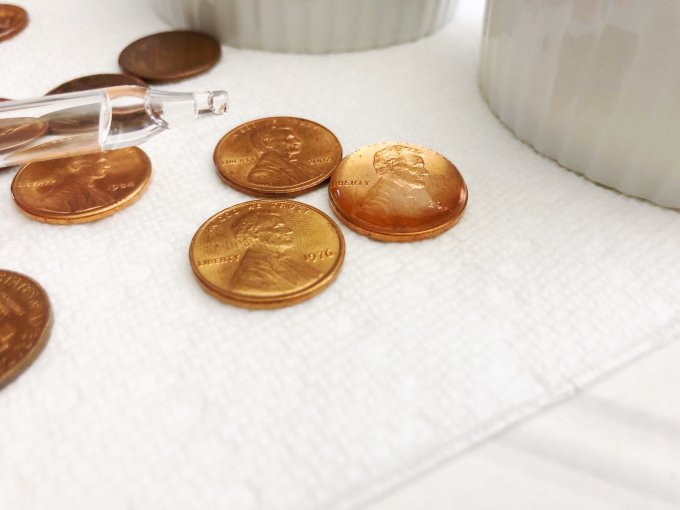
Why Do So Many Drops Of Water Fit On A Penny?
Were you surprised that a lot more drops of water fit on a penny than you predicted? We had 27 drops of water on ours!
What property of water allows the water to stick to the penny? Surface tension and cohesion are why you can get so many drops of water on a penny.
Cohesion is the “stickiness” of like molecules to one another. Water molecules love to stick together! Surface tension is the result of all the water molecules sticking together. Learn more about the surface tension of water !
Once the water has reached the edge of the penny, a dome shape begins to form. This is due to the surface tension forming a shape with the least amount of surface area possible (like bubbles )!
What happens if you use a different liquid like alcohol? Can you as many drops on a penny?
More Fun Penny Experiments
- Sink the boat challenge!
- Penny Spinners
- Green Pennies Experiment
- Paper Bridge STEM Challenge
- Lemon Battery STEM Project
Use the Scientific Method
This drops of water on a penny experiment is a fantastic opportunity to use the scientific method and record your experiment using the free mini worksheet pack below.
You can read about using the scientific method here , and find more information on the independent and dependent variables !
The first step in the scientific method is asking a question and developing a hypothesis.
Apply the scientific method to this drops-on-a-penny science activity and turn it into a surface tension experiment by choosing a question to investigate.
- How many drops do you think will fit on a penny? (PREDICTION)
- What happens when one drop of water meets another drop? (OBSERVATION)
- Which coin held the most water? (EXPLANATION)
- Can you think of everyday examples of surface tension? (APPLICATION)
Helpful Science Resources To Get You Started
Here are a few resources that will help you introduce science more effectively to your kiddos or students and feel confident yourself when presenting materials. You’ll find helpful free printables throughout.
- Best Science Practices (as it relates to the scientific method)
- Science Vocabulary
- 8 Science Books for Kids
- All About Scientists
- Science Supplies List
- Science Tools for Kids
More Science Experiments To Try
Check out our list of science experiments for Jr Scientists!
- Walking Water
- Rubber Egg Experiment
- Why Do Things Float In Salt Water?
- Water Density Experiment
Printable Science Projects For Kids
If you’re looking to grab all of our printable science projects in one convenient place plus exclusive worksheets and bonuses like a STEAM Project pack, our Science Project Pack is what you need! Over 300+ Pages!
- 90+ classic science activities with journal pages, supply lists, set up and process, and science information. NEW! Activity-specific observation pages!
- Best science practices posters and our original science method process folders for extra alternatives!
- Be a Collector activities pack introduces kids to the world of making collections through the eyes of a scientist. What will they collect first?
- Know the Words Science vocabulary pack includes flashcards, crosswords, and word searches that illuminate keywords in the experiments!
- My science journal writing prompts explore what it means to be a scientist!!
- Bonus STEAM Project Pack: Art meets science with doable projects!
- Bonus Quick Grab Packs for Biology, Earth Science, Chemistry, and Physics

One Comment
- Pingback: Simple Science Experiments For Kids | Little Bins for Little Hands
Comments are closed.

Subscribe to receive a free 5-Day STEM Challenge Guide
~ projects to try now ~.
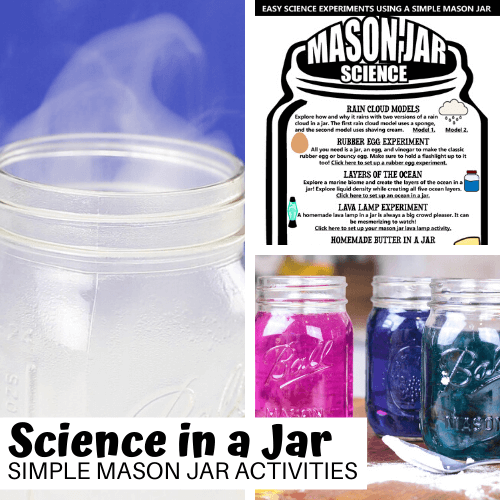

IMAGES